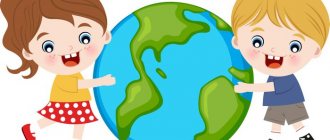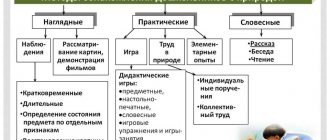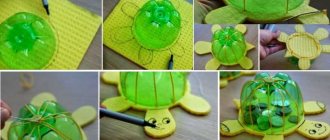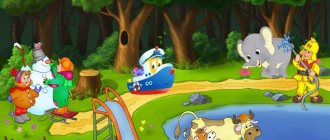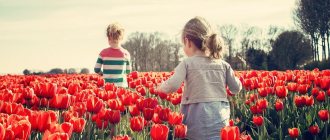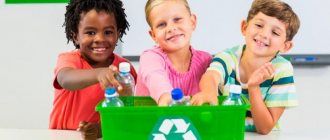Work program on ecology in the senior group
Natalia Baklanova
Work program on ecology in the senior group
Explanatory note
Good nature has taken care of everything so much that everywhere you find something to learn
Leonardo da Vinci
The ecological state of our planet and its deterioration trends require that living people understand the current situation and have a conscious attitude towards it. Environmental problems are common to all continents and states. Environmental problems and the need to overcome them have given rise to a new direction in education – environmental . It is important for each of us to understand how a person is connected with nature, how he depends on it, what patterns exist in nature and why humanity has no right to ignore them.
Environmental education of preschoolers is an introduction to nature for children, which is based on an ecological approach , and the pedagogical process is based on the fundamental ideas and concepts of ecology . The subject environment of a preschool child includes various natural objects, so his familiarization with plants, animals, and inanimate natural phenomena is inevitable - this is a natural process of learning about the world around him and acquiring social experience. Preschool childhood is the initial stage of the formation of a person’s personality, his values, orientation in the world around him. During this period, a positive attitude towards nature, towards the “man-made world”
, to yourself and to the people around you.
The main content of environmental education is the formation in a child of a consciously correct attitude towards natural phenomena and objects that surround him and with which he becomes acquainted in preschool childhood.
Little children believe absolutely everything and absorb everything like a sponge. You don’t have to be a doctor of biological sciences to tell your child important and interesting environmental information . Any of us can teach a child to distinguish an oak from a birch or watch with him how sprouts emerge in the spring - tell him why it is harmful to burn grass and why you need to be careful with water. And " environmentally friendly "
behavior will quickly become a habit for the child.
This work program for environmental education of preschoolers was developed for children 5-6 years old on the basis of a plan - a program of the pedagogical process in kindergarten “From birth to school”
(Edited by N. E. Veraksa, M. A. Vasilyeva, T. S. Komarova .)
in accordance with the Federal State Educational Standards of Preschool Education.
The program lies in the fact that it covers different aspects of environmental education for preschool children. The program provides not only environmental education for preschool children, but also motivation to develop children’s skills to provide all possible assistance to our nature. It includes the development in children of the skills of setting up and conducting simple experiments. For example, growing seedlings for flower beds in a kindergarten. Thanks to the inclusion of children in the development of this educational program , preschoolers receive environmental knowledge , they develop observation, a sense of empathy, the ability to see beauty in nature, and the ability to provide all possible assistance to nature. Personal qualities such as kindness, responsibility, hard work, independence, and the ability to work in a team .
The goal of the program : to form the foundations of environmental consciousness and environmental culture .
Program objectives :
• Enrich children with knowledge about nature, its diversity, the integrity of a living organism, its needs, distinctive features, features of adaptation to the environment, and lifestyle.
• To form concepts about the relationships and interdependence of all components of nature; animals with each other, plants and animals, living and inanimate nature, humans and nature.
• Instill practical skills and abilities to care for plants.
• Develop artistic abilities, aesthetic feelings; the ability to notice beauty, admire and admire objects of nature, protect and, if possible, increase the beauty and riches of native nature.
•Develop children's coherent speech: enrich and activate vocabulary, develop interactive speech, teach writing stories.
To work on developing environmental education for preschoolers, a long-term plan for working with children was developed . Different working .
Visual methods: targeted walks ; observations; examination of book illustrations and reproductions; conducting didactic games.
Verbal methods: reading literary works; conversations with elements of dialogue, summarizing the stories of the teacher.
Game methods: conducting a variety of games (sedentary games, role-playing games, didactic games, dramatization games, etc.); telling riddles.
Practical methods: organizing children's productive activities; design of a herbarium of plants and fruits; experimentation.
When building a work , special attention is paid to the following main areas:
the educational and entertaining direction aims to introduce children to the components of living and inanimate nature, the influence of human activity on these components in a playful and entertaining way;
practical direction - the study of flora and fauna related to practical matters (feeding birds, planting flower beds, etc.)
;
research direction is carried out within the framework of productive activities (observations, experiments)
.
To summarize: exhibitions, photo exhibitions, video creation, diagnostics.
Conditions for the program
for the effective implementation program in kindergarten:
Organized " ecological space "
in the kindergarten premises:
group corners of nature , plants are selected and placed in accordance with their biological characteristics; on the territory of the kindergarten: ecological trail , vegetable garden;
Fund of methodological, visually illustrated materials;
Mini-laboratories have been created to organize and conduct experiments with natural objects.
The program is designed for one year of study:
Classes are designed for ages 5-6 years. There are 36 lessons in total. Lesson duration 25 minutes.
During classes, children can sit in a circle (on the carpet)
or at the tables, move around the game room, depending on the progress of the lesson.
Classes can be conducted with children of any level of readiness for school. The form of organization of classes is with the whole group of children or subgroups , at the discretion of the teacher.
The developing ecological environment is represented in the group by the following zones :
"Little Scientist"
Various instruments are presented: scales, magnifying glasses, magnets, microscope;
A variety of vessels from various materials: glass, metal, plastic; Natural materials: leaves, sand, clay, earth, seeds, cones, shells, stones;
Medical materials: pipettes, flasks, syringes, measuring spoons, cotton wool, bandage;
Waste material: plastic, foam, pieces of fabric, leather, fur, sawdust, shavings;
Bulk products (flour, grains, cereals, salt, food coloring)
;
Candles, lanterns;
Children's robes, aprons;
Card index for conducting experiments;
"Nature Corner"
Nature calendar, nature calendar model
Flower corner (aesthetically designed; plants are selected and arranged according to their characteristics)
Various containers (watering cans; buckets; plastic bottles of various colors)
Funnels
Natural material (cones, stones, acorns, moss, pieces of bark and wood, chaga, herbarium)
Toys (sand sets, rubber toys, boats)
"Garden on the windowsill"
Mini-garden (containers for growing seedlings of flower and vegetable crops; seeds of flowers, vegetables and cereals)
Gardener's corner (tools for watering, loosening, caring for plants)
"Skillful Hands"
Children are offered various materials:
For drawing (gouache, pastel, colored pencils, watercolor, brushes)
For modeling (plasticine, clay, salt dough)
For applique (colored paper, white paper, glue, scissors, stencils)
Exhibitions of reproductions of famous artists are also organized here (by theme, by season)
and
the works of the children themselves , made in various techniques.
" Ecological trail "
The center is organized on the territory of the kindergarten.
Children's garden equipment is provided for the work
Long-term work plan for the senior group
5-6 years
Date Topic Objectives Contents
September
1 week “Flowers on the site in autumn”
To consolidate children's knowledge about autumn garden flowers: differences in appearance.
Clarify children's ideas about gardening in the fall .
Making riddles Didactic game “Guess by description”
Experimentation: “Plants breathe easier if the soil is watered and loosened”
Making the herbarium “Autumn Palette”
Week 2 “In the garden or in the vegetable garden”
Expand children's understanding of the diversity of the plant world;
about vegetables, fruits and berries. Learn to recognize them and correctly name vegetables, fruits, and berries. To form a general idea about the benefits of vegetables and fruits, about the variety of dishes made from them Demonstration material “Vegetables and Fruits”
,
“Berries”
Models of vegetables and fruits, berries
Guessing riddles
Didactic game “Guess what it is?”
Modeling “Basket with vegetables”
Week 3. " Ecological trail in autumn "
Expand your understanding of the objects
of the ecological trail and seasonal changes in nature.
To form an aesthetic attitude towards the surrounding reality. Systematize children’s knowledge about the benefits of plants for humans and animals Observations of plants in nature Didactic game “Find a tree”
Drawing “Autumn Forest”
Week 4 “Autumn”
Form an idea of the alternation of seasons.
To consolidate knowledge about seasonal changes in nature. Introduce the traditional calendar. Examination of the illustration of Levitan’s painting “Golden Autumn”
Reading by A. Tvardovsky. "Forest in Autumn"
, K. Paustovsky
“Farewell to Summer”
, A. Maikov
“Autumn”
, Russian folk tale “Seven Simeons - seven
workers in the processing of Karnaukhovia .
Making crafts from natural materials
October
Week 1 “Take care of animals!”
(October 4 - World Animal Day)
Expand your understanding of the diversity of the animal world. Reinforce knowledge about animals and their habitats. Cultivate a conscious, caring attitude towards the natural world. Give a basic idea of how to protect animals. Observation of animals.
Reading fiction about animals
Memorizing poems
Making a poster “Take care of animals!”
Didactic game “Build a house for an animal”
Week 2 “Good, good sun”
Clarify children's knowledge about the sun in autumn.
Develop the ability to determine the weather by signs Working with the weather calendar
Experimenting: “Palms”
Didactic game “All year round”
Drawing “My sunshine”
Learning the physical exercise “The sun lifts us up to exercise”
Week 3 “ Walk in the woods ”
Expand children’s understanding of the diversity of the plant world. Provide knowledge about the species diversity of forests: deciduous, mixed Demonstration material
“Trees and
shrubs ” Conversation “How we behave in the forest”
Guessing riddles
Didactic game "Trees and shrubs "
Week 4 “Happy Rain”
Explain the causes of rain.
to form children's cognitive interest in nature. Develop children's ability to observe seasonal phenomena and their changes. To develop the ability to identify the characteristic signs of autumn and summer rain. Demonstration material “Natural Phenomena”
Reading Suteev’s fairy tale “Under the Mushroom”
Finger game "Rain"
Listening to the song “The Evil Cloud Was Punished...”
November
1 week “Indoor plants”
Clarify children's ideas about plants in
the group and the living conditions necessary for them. Introduce new plants. Teach to recognize and name parts of a plant (root, stem, leaf, flower)
Demonstration material
“Indoor plants”
Didactic game “Find the plant”
Physical school
Experimentation: “What Plants Need to Grow”
Week 2 “November 12 – Titmouse Day”
Expand children's knowledge about tits.
Introduce the traditions of the holiday “Titmouse Day”
, instill love and respect for our native nature Conversation
“Titmouse Day”
Listening to the voice of the titmouse
Making riddles about the tit
Reading the story by N. Sladkov. "Titmouse Arithmetic"
Proverbs about dreams
Making feeders
Week 3 “Feathered Friends”
To form children's ideas about wintering and migratory birds.
Develop interest in the world of birds, curiosity. To give an idea of the importance of birds for the environment Demonstration material “Wintering and migratory birds”
Reading stories about birds by K. D. Ushinsky
Bird watching
Drawing "Bullfinches"
Week 4. “What cures us for colds”
Clarify children's knowledge of medicinal herbs, the benefits of onions and garlic. Develop cognitive activity. Examination of medicinal plants
Making riddles
Reading the poem by S. Mikhalkov “I look sad.”
Didactic game “Prepare medicine”
December
1 week “Winter-winter”
Continue to teach children to identify the seasons using essential signs and objects.
Reinforce the names of the winter months, learn to name the signs and symptoms of winter. Introduce the concept of a calendar. Create a joyful mood for children Demonstration material “Natural Phenomena”
,
“Winter”
Working with the weather calendar
View the presentation “Winter in the paintings of artists”
Making riddles
Week 2 “Wild animals in winter”
Continue to develop knowledge about forest inhabitants.
To develop in children ideas about the sequence of events in the life of forest animals Demonstration material “Wild Animals”
View the presentation “How Animals Winter”
Reading poems
Outdoor game "Hares and wolves"
Didactic game “Prepare the bunny and squirrel for winter”
Reading stories by Mamin-Sibiryak
Week 3 “Snowflake”
Develop the ability to observe seasonal phenomena and their changes, attention and memory, see the beauty of nature Observation while
walking
Watching the educational video “Why are snowflakes different”
Experimentation: “Getting to know the properties of snow”
Didactic game "Snowflakes"
Week 4 “Christmas tree-green needle”
Introduce children to the concept that cones contain the seeds of coniferous trees.
To develop children’s ability to distinguish between a spruce and a pine cone. Talk about the traditions of celebrating the New Year Demonstration material “Trees”
Observation of the spruce
Conversation “Christmas tree or pine”
Didactic game “Find by description”
“Decorate the Christmas tree”
Examination of natural material (pine cones)
Application “Beautiful Christmas tree”
»
January
Week 1 “Clouds are white-maned horses”
Expand children's understanding of inanimate natural phenomena: tell children what types of clouds there are. Teach to see beauty in the world around us and treat nature with care. Looking at photo illustrations.
View the presentation “Water cycle in nature”
Conversation “What types of clouds are there?”
Cloud watching
Making riddles
Learning a poem p. Mikhalkov “Clouds, clouds with curly sides”
Week 2 “Snow round dance”
Expand children's understanding of winter changes in nature.
Reinforce knowledge about the winter months. Activate vocabulary (snowfall, blizzard, frost, frost)
Observation of winter weather
Looking at the painting “Winter”
Drawing "Snowflakes"
Reading stories by N. A. Gulrieva “Snow”
,
“Rime.
Frost" ,
"Winter patterns"
Working with the weather calendar
Experimentation "Snow Maiden"
Week 3 “ Ecological trail in the kindergarten building”
Expand children's understanding of the objects
of the ecological trail .
Learn to recognize and name familiar plants and animals. Expand your understanding of how to care for plants and animals Reading works about nature Staying in a corner of nature
Didactic game “Miracle Flower”
Modeling “Violet”
Week 4 “Bird life in winter”
Teach children to look at birds, distinguish them by size, plumage color, and sounds made.
Introduce them to their names Demonstration material “Birds of central Russia”
Didactic game “Feed the bird”
,
“They fly away - they don’t fly away”
Listening to the voices of birds
Making riddles
February
1 week “Wild animals in the forest in winter”
Contribute to: enriching and deepening children's knowledge about wild animals in winter, developing the ability to establish connections between winter conditions and the behavior characteristics of animals Demonstration material
“Wild Animals”
Conversation about squirrel, hedgehog, hare, fox, bear
Outdoor game “We are little bunnies”
,
Didactic game “Let’s put animals in our forest”
Week 2 “Laboratory of good deeds”
To form the concept of kindness, the habit of doing good deeds;
cultivate interest in experimental activities; analyze phenomena, draw conclusions; develop cognitive interest, logical thinking, and speech of children; evoke a feeling of joy in children Demonstration material “Lessons of kindness”
Reading of Mayakovsky’s poem “What is good”
Experimenting "Descartes' Diver"
Games with soap bubbles
Week 3 “Excursion to the Zoo”
Expand children's understanding of the diversity of the animal world and the fact that humans are part of nature. To form the idea that animals are divided into classes: insects, birds, fish, animals Demonstration material
Conversation about animals
“Grasshopper” by N. Nesmeyanova
Drawing animals
Didactic game "Star Zoo"
Week 4 “Observing seasonal changes”
Form ideas about changes in nature;
learn to distinguish the characteristic signs of the end of winter (the first drops)
Demonstration material
“Phenomena in Nature”
Reading of I. Demyanov’s poem “Jolly Ice”
Didactic game “All year round”
Working with the weather calendar
March
Week 1 “Flowers for Mom”
Expand knowledge about the variety of indoor plants.
develop cognitive interest in nature. Give basic ideas about plant propagation by vegetative means. Learn to plant seedlings of indoor plants Demonstration material “Indoor plants”
Observation and care of indoor plants
Reading poetry
Application "Violets"
Week 2 “Spring is coming to us with quick steps”
Continue learning to remember the names of the spring months;
give an idea of the changes that occur in early spring in nature Reading the poem “March”
,
“Spring is Coming”
Didactic game “Find the mood, show the mood”
,Experimentation:
“Interaction of water and snow”
Outdoor game “Stream”
Week 3 “Water Resources of the Earth”
Expand children's understanding of the diversity of water resources: springs, lakes, rivers, seas, how a person can use water in his life, how to use water resources economically. Watch the cartoon
“Run, Stream!”
Conversations about water resources
Looking at illustrations depicting water abodes
Reading of K. Balmont's poem "Stream"
Outdoor game "Stream"
,
“The sea is agitated once”
Week 4 “Our four-legged friends – the dog”
To form in children the idea that a dog is an intelligent pet, devoted to a person, it can be trained and used in various useful services Demonstration material
“Dog Breeds”
Stories and viewing photographs about your pets
Reading poems about dogs
Making riddles
Learning the physical exercise “I got a puppy”
Modeling "Puppy"
April
1 week “Taking care of your health”
To promote in children a caring attitude towards their health;
form the idea that in spring, vitamin-rich foods (green onions, etc.)
and the sun are especially useful. View the presentation
“Pills grow on a branch, tablets grow in a garden bed.”
Conversation “What is good for health, what is harmful”
Week 2 “Growing onions in the window”
Arouse interest in growing a vegetable garden in the window, a desire to observe changes in the bulbs Conversation
“Are onions useful or harmful”
Asking riddles
“Cippolino” by G. Rodari
Looking at the bulb
Planting onions
Week 3 “The first flowers in nature”
Encourage children to enjoy the first spring flowers, continue to introduce them to the names and structural features Demonstration material
“Primroses”
Comparative story about coltsfoot and dandelion
Making riddles
Didactic game “Assemble a flower from parts”
Application "Dandelion"
Week 4 “Feathered guests”
To contribute to the generalization of ideas about birds in the spring: changes in their behavior - basking in the sun, on trees, chirping, nesting, hatching chicks, etc.;
cultivate curiosity and a desire to take care of birds Demonstration material “Migratory Birds”
,
“Dwellings”
Making birdhouses
Bird watching in the kindergarten area
Didactic game “What kind of bird”
Application “Birds at the feeder”
May
Week 1 “What are clouds, rain, thunderstorms?”
Give the concept of water evaporation, cloud formation, and electrical discharges in an accessible form.
Introduce children to the rules of behavior during a thunderstorm Demonstration material “Natural Phenomena”
Observation of the weather
Working with the weather calendar
Reading poems
Week 2 “Natural material”
To consolidate children's ideas about the properties of sand, clay and stone. Develop an interest in natural materials. Show how a person can use sand, clay and stones for their needs Finger gymnastics
Experimentation: “Why sand falls”
Conversations about working specialties
Week 3 “Forests and meadows of our Motherland”
To consolidate knowledge about the diversity of the flora of Russia. Form ideas about plants and animals of forests and meadows. Expand your understanding of the relationship between flora and fauna. Foster a caring attitude towards nature Reading works by children's writers about nature
Looking at illustrations
Didactic game “Guess and Tell”
Drawing plants and animals
Week 4 “Spring Harassment”
Consolidate knowledge about spring changes in nature.
Expand your understanding of the features of agricultural work in the spring . Foster a respectful attitude towards people involved in agriculture Demonstration material “Bread is the head of everything”
Learning poems and proverbs about bread
Conversations about bakery and confectionery products
Application "Spikelet"
Relevance of the problem of environmental education
With the adoption of the laws of the Russian Federation “On Environmental Protection” and “On Education”, the prerequisites for the legal framework were created for the formation of a system of environmental education for the population. “The Decree of the President of the Russian Federation on environmental protection and sustainable development” (taking into account the Declaration of the UN Conference on Environment and Development, signed by Russia), the corresponding government resolutions elevate environmental education to the category of priority government problems. These documents imply the creation in the regions of the country of a system of continuous environmental education, the first link of which is preschool. It is at this age that the foundations of a person’s worldview and his relationship to the world around him are laid.
The environmental situation in the world requires a change in human behavior and a change in value orientations. To do this, everyone living on Earth needs to understand the real position of man as a biological species that exists on our planet along with other, no less significant species. We must understand the limited natural resources of the territories used. Today, more and more countries, including ours, are joining the implementation of the concept of sustainable development. According to this concept, people must comply with the laws of nature and change their consumer attitude towards it to recognize its intrinsic value: on the one hand, the interests of people and their desire to create acceptable living conditions for themselves must be taken into account, on the other hand, human aspirations should be limited by the framework of natural laws.
To put these principles into practice, we need people with new thinking. That is why, all over the world, more and more attention has recently been paid to environmental education. Achieving the goals declared in the modern concept of sustainable development is possible only through environmental education. The “Concept of Sustainable Development of Russia” contains a section “Environmental education, greening of public consciousness.” It especially emphasizes the formation by all available means of an ecological worldview of Russian citizens, and first of all children. This approach requires analyzing the content and methodology of environmental education for preschoolers.
First of all, we must pay attention to the following issues.
- Understanding the intrinsic value of nature.
- The child’s awareness of himself as a part of nature.
- Cultivating a respectful attitude towards all species without exception, regardless of our likes and dislikes.
- Understanding that everything in nature is interconnected and the violation of one of the connections leads to other changes: a “chain reaction” occurs.
- Raising an active life position in children.
- Teaching the basics of basic environmental safety.
- Formation of initial information about the rational use of natural resources using the example of the use of water and energy in everyday life.
- Formation of environmentally literate behavior in everyday life and in nature.
- Formation of an emotionally positive attitude towards the world around us, understanding the dependence of its state on the actions of a person (including a child).
- Understanding the uniqueness and beauty of the surrounding world.
For many years, society was aimed at transforming nature, at “taking all its riches,” and man considered himself a winner, a conqueror of nature. This is the main idea of anthropocentrism, which is widespread in many ways today, including in preschool education. This means that in the human-nature relationship, man views himself as the main actor who can remake his environment as he pleases, for his own good. The younger generation can and should develop a new - ecological - consciousness.
Then this generation will build its relationship with nature from a different position -
the position of biocentrism,
which means:
man is special, intelligent, but still only a part of nature, and ecology is not just a science, it is a worldview!
Whatever a child becomes in the future, he must understand well his role in the world around him, be aware of the consequences of his actions, and have an understanding of the laws of nature.
MAGAZINE Preschooler.RF
Work program for the course “Environmental education”TEACHER'S WORK PROGRAM (preparatory group)
Modern problems of human relations with the environment can be solved only if all people acquire an ecological culture, ecological thinking, ecological consciousness, and environmentally justified relationships with nature. The legislative framework that governs preschool educational institutions elevates environmental education to the category of priority state problems. Preschool age is the optimal stage in the development of an individual’s ecological culture. At this age, the child begins to distinguish himself from the environment, an emotional and value-based attitude towards the environment develops, and the foundations of moral and ecological positions are formed, which are manifested in the child’s interactions with nature, as well as in his behavior in nature.
Thanks to this, it becomes possible to develop environmental knowledge in children, norms and rules for interacting with nature, developing empathy for it, and being active in solving some environmental problems. By environmental education we mean a continuous process of training, education and development of a child, aimed at developing a system of knowledge and skills, value orientations, moral, ethical and aesthetic attitudes that ensure a responsible (consciously correct) attitude towards the state of the environment. This work program of the MBDOU “Combined Kindergarten No. 20” was developed on the basis of the “Young Ecologist” by S.N. Nikolaeva and covers the environmental education of children from the second youngest to the preparatory group, i.e. 4 years of education and training. It shows continuity from one age group to another.
The program is aimed at developing an emotional, value-based, active attitude of preschool children to nature.
The program is designed taking into account the implementation of interdisciplinary connections across sections.
- “Art activity” , where works of painting about nature are used according to the seasons, various products are made from natural materials.
- “Fiction” , which uses works about nature.
- “Musical education” , where musical works about nature and seasonal changes are learned, musical festivals and entertainment are held.
- “Physical education” , where the basics of a healthy lifestyle are instilled, excursions, hikes, and outdoor entertainment are held.
Tasks:
- Expand and generalize children’s knowledge about the natural world as an integral interconnected system.
- Develop general cognitive abilities: the ability to observe, describe, make assumptions and suggest methods and tests, find cause-and-effect relationships.
- To form a conscious and caring attitude of children towards nature.
Educational and methodological kit:
- The program of education and training in kindergarten, edited by M.A. Vasilyeva,
V.V. Gerbova, T.S. Komarova.
- Environmental education program for preschoolers “Young Ecologist” S.N. Nikolaev
- Environmental education program for preschool children “Nature is our home” N.A. Ryzhova
- Practical guide: “Ecological activities with children 6-7 years old” T. M. Bondarenko
- Methodical manual “Walks in kindergarten” T.M. Bondarenko
| Next > |
The “Young Ecologist” program is aimed at developing the foundations of ecological culture in children aged 2-7 years in a kindergarten, at developing in children a humane attitude towards living beings, and at developing skills in caring for the inhabitants of a corner of nature. The program is built taking into account the results of research by scientists in the field of child psychology and pedagogy (A.V. Zaporozhets, L.A. Wenger, V.S. Mukhina, N.N. Poddyakova, P.G. Samorukova, etc.).
The goal of the program: to educate preschoolers’ environmental culture.
Principles of program implementation:
- gradual increase in the volume of material;
- priority use of the natural environment: plants and animals of the green zone of the kindergarten and plots;
- promoting children from single sensory impressions to the diversity of these impressions, then to specific ideas, then to a generalization of ideas;
- widespread use of different types of practical activities;
- presenting educational material using techniques that arouse interest and positive emotions in children.
The program includes sections: “Inanimate nature - the living environment of plants, animals, humans”; “Recommendations for the distribution of material by age groups.” And also the conditions are revealed, the observance of which contributes to the successful implementation of the “Young Ecologist” program in the practice of the kindergarten. Practical recommendations are given for creating a developing ecological-subject environment in a preschool institution. A wide range of illustrative material is provided, which is taken as the basis for creating the necessary visual aids. The planned results for the development of this program correspond to the targets outlined in the Federal State Educational Standard for Education, namely:
the child shows curiosity, asks questions to adults and peers, is interested in cause-and-effect relationships, and tries to independently come up with explanations for natural phenomena and people’s actions;
the child is inclined to observe and experiment;
has basic knowledge about himself, about the natural and social world in which he lives;
is familiar with works of children's literature, has basic understanding of wildlife, natural science, mathematics, history, etc.
The “Young Ecologist” program highlights two aspects of the content of environmental education: the transfer of environmental knowledge and its transformation into attitude.
“Environmental education of preschool children” consists of 7 sections.
Section 1 - basic information about the universe, the inanimate nature of the Earth and its significance in the life of living beings, which are considered both in themselves and as components of the living environment of living beings. It is shown that without water, air, soil, the life of plants, animals and humans is impossible, that planet Earth, unlike other planets of the solar system, has the entire complex of necessary conditions for life in all its forms.
Sections 2, 3 - knowledge of the actual ecological laws of nature - the life of plants and animals in their habitat and in the community. These laws can be interestingly learned already at preschool age in order to understand them, become familiar with them in your behavior and live in accordance with them on Earth.
Section 4 traces the role of habitat in the process of ontogenesis - the growth and development of certain species of plants and higher animals.
Section 5 explores the relationships within communities that children can observe.
Section 6 shows different forms of human interaction with nature.
Section 7 provides general recommendations for the distribution of material by age.
Ecological knowledge is not an end in itself, but only a means of developing an attitude towards nature, which is built on an emotionally sensitive basis, demonstrated by the child in various types of activities.
